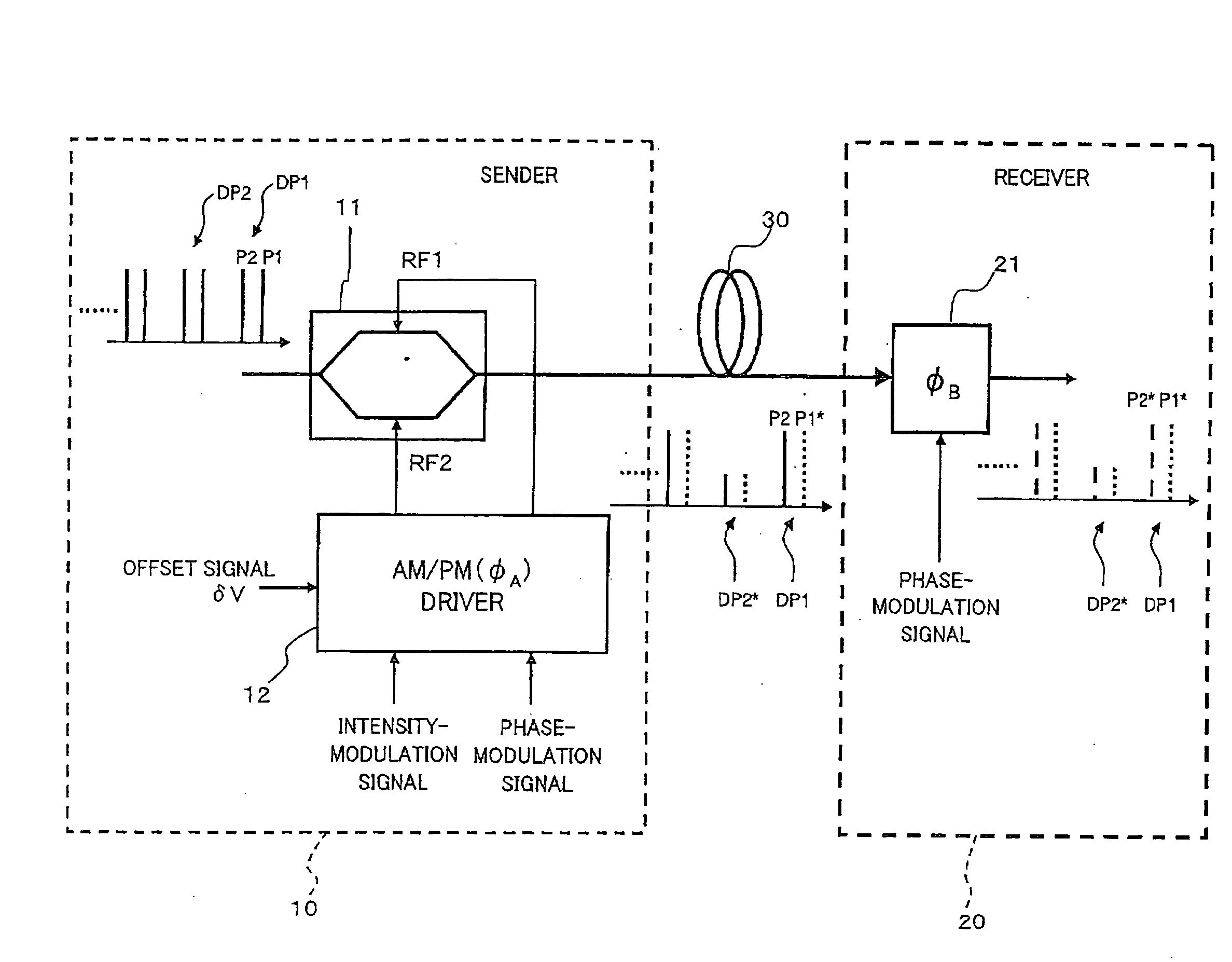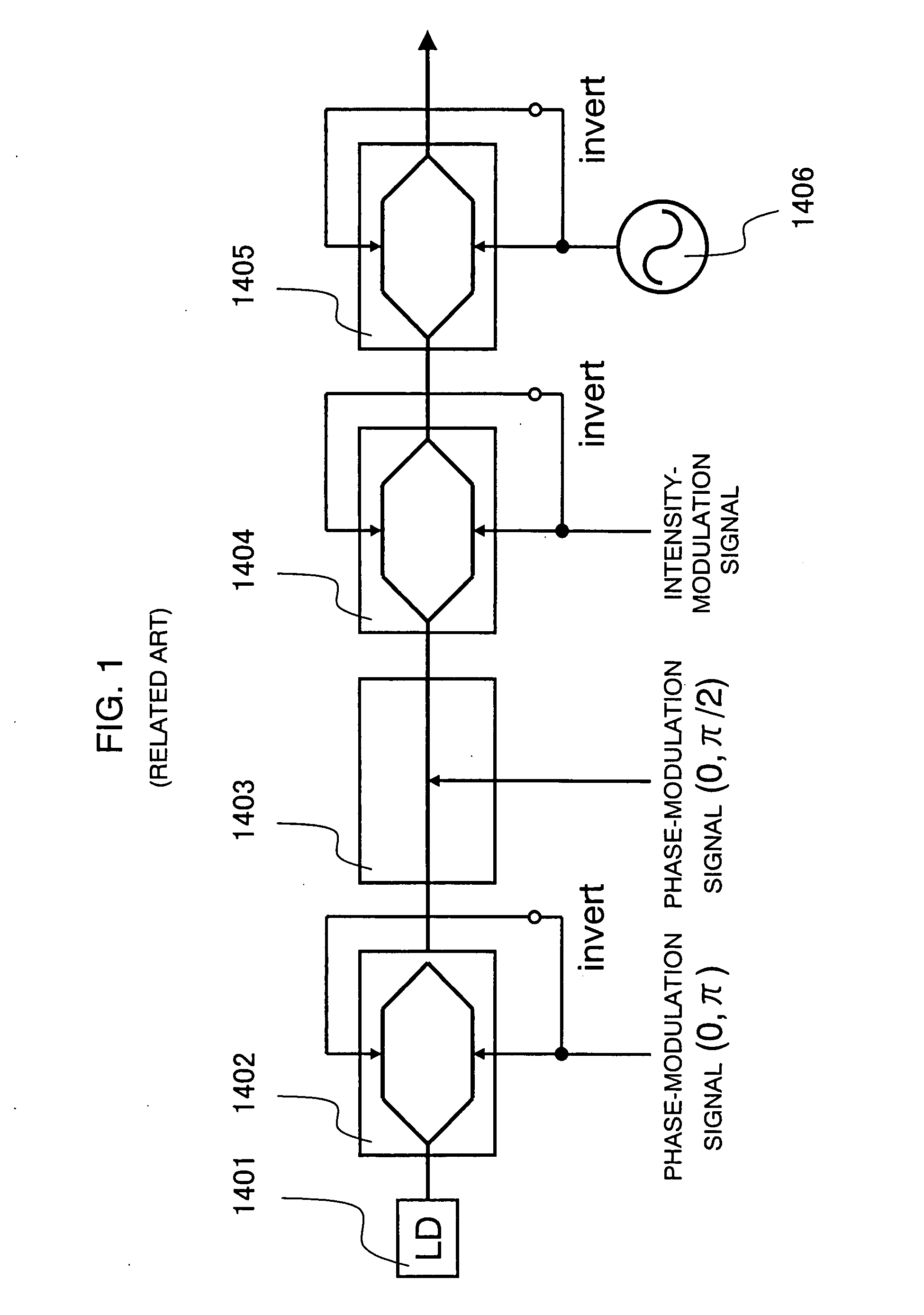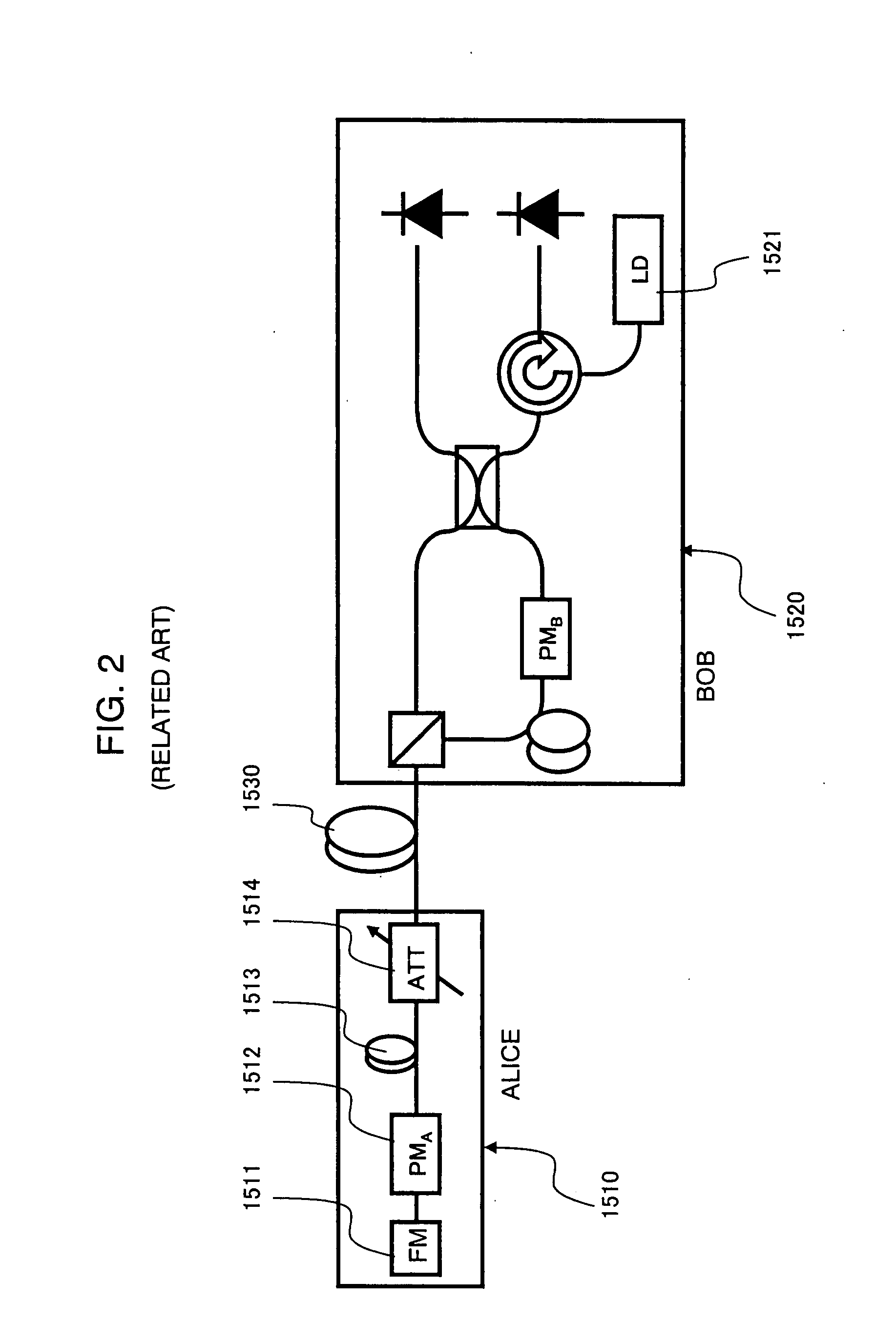Optical communication device and quantum key distribution system using the same
a communication device and quantum key technology, applied in the field of optical communication systems, can solve the problems of deterioration in waveform, difference in propagation delay, and difficulty in achieving higher speed only by using ask, so as to reduce optical loss, reduce the intensity of transmitted optical pulses, and achieve higher speed
- Summary
- Abstract
- Description
- Claims
- Application Information
AI Technical Summary
Benefits of technology
Problems solved by technology
Method used
Image
Examples
first embodiment
2. First Embodiment
[0092]2.1) System Configuration
[0093]FIG. 9 is a block diagram showing a configuration of a two-way quantum key distribution (QKD) system according to a first embodiment of the present invention. Here, it is assumed that a sender (Alice) 40 and a receiver (Bob) 50 are connected through an optical fiber transmission line 60.
[0094]First, an optical pulse outputted from a laser light source 501 in the receiver 50 is sent to an optical coupler 503 by a circulator 502 and split into two pulses by the optical coupler 503. One of the two optical pulses is directly sent to a polarization beam splitter 505, allowed to pass through it, and then sent out to the transmission line 60. The other optical pulse is allowed through a phase modulator 504, sent to the polarization beam splitter 505, reflected there, and then sent out to the transmission line 60. The two optical pulses can be made to arrive at the polarization beam splitter 505 at different times by giving a differenc...
second embodiment
3. Second Embodiment
[0120]The present invention can be applied not only to two-way quantum key distribution systems but also to one-way systems.
[0121]FIG. 15 is a block diagram showing a schematic configuration of a one-way QKD system according to a second embodiment of the present invention. The present embodiment is a one-way QKD system using the planar lightwave circuit (PLC) described in Nambu, Y., et al., “One-way Quantum Key Distribution System based on Planar Lightwave Circuits,” quant-ph / 0603041, to which the present invention is applied. A sender or transmitter (Alice) 70 and a receiver (Bob) 80 are connected through optical fiber 90 and each have an interferometer for time-delayed pulses, structured by using an asymmetric Mach-Zehnder interferometer (AMZI) based on PLC technology.
[0122]The sender 70 has a pulse light source 701, an asymmetric Mach-Zehnder interferometer 702 based on a planar lightwave circuit, a MZ modulator 703 capable of intensity modulation and phase mo...
PUM
| Property | Measurement | Unit |
|---|---|---|
| voltage | aaaaa | aaaaa |
| voltage | aaaaa | aaaaa |
| voltage | aaaaa | aaaaa |
Abstract
Description
Claims
Application Information
 Login to View More
Login to View More - R&D
- Intellectual Property
- Life Sciences
- Materials
- Tech Scout
- Unparalleled Data Quality
- Higher Quality Content
- 60% Fewer Hallucinations
Browse by: Latest US Patents, China's latest patents, Technical Efficacy Thesaurus, Application Domain, Technology Topic, Popular Technical Reports.
© 2025 PatSnap. All rights reserved.Legal|Privacy policy|Modern Slavery Act Transparency Statement|Sitemap|About US| Contact US: help@patsnap.com



